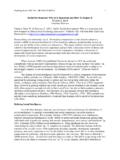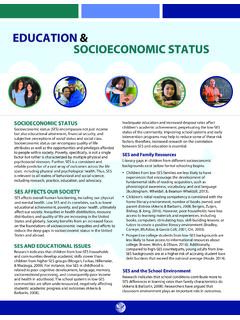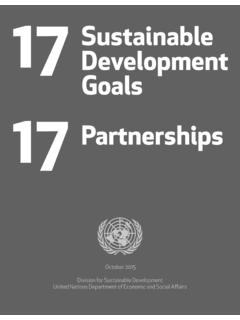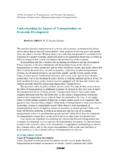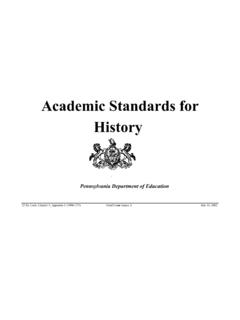Transcription of Human resource management and human resource …
1 Creighton Journal of Interdisciplinary Leadership Vol. 1, No. 2, November 2015, pp. 120 129 2015 N. Richman Creighton Journal of Interdisciplinary Leadership DOI: COMPREHENSIVE REVIEW Human resource management and Human resource development : Evolution and contributions Nicole Richman, MBA George Fox University, doctoral student, Abstract. Research agrees that a high performance organization (HPO) cannot exist without an elevated value placed on Human resource management (HRM) and Human resource development (HRD). However, a complementary pairing of HRM and HRD has not always existed. The evolution of HRD from its roots in Human knowledge transference to HRM and present day HRD activities reveals that environmental, social, and political influences have escalated the need for organizations to focus employee development in the areas of flexibility, innovation, and capability. The following review illustrates the importance of HRM and HRD to organizational leadership.
2 Furthermore, the research examined builds a close association between the attributes of a HPO and the skills transferred through an effective collaboration of HRM and HRD activities. Keywords: high performance organization (HPO), Human resource management (HRM), Human resource development (HRD) Introduction rom financial transactions to operational decisions and beyond, the core of every business function relies on an organization s greatest asset: its Human resources. As such, Human resources boast significant responsibility for the success or failure of an organization (de Waal, 2007; Haslinda, 2009). The value of Human resources is not always widely apparent. In fact, present day perception frequently limits Human resource management (HRM) and Human resource development (HRD) to recruitment, compensation, and legalities of managing a workforce (Haslinda, 2009).
3 This review identifies the emergent value of Human resources, the transformation from education and training to HRD, and the relative importance of HRD to organizational leaders. Specifically, it outlines the reliance of high performance organizations (HPOs) on HRM and HRD, concluding with the present day critical issues facing HRM and HRD. The acronyms HRM, HRD and HPO can be, and often are, confused (Haslinda, 2009). However, to examine their historical and future implications, the differentiation of the acronyms must first be understood. Researchers have adopted a multitude of definitions for the same acronyms. The definitions vary based on country of origin, global perspective, or individual theorist (Haslinda, 2009). The definitions listed below are selected as the foundational meanings for this paper because each one encompasses the overarching themes across literature.
4 Human resource management (HRM) Haslinda (2009) cites HRM as the process of managing Human talents to achieve organization s objective (Haslinda, 2009, p. 180). Recruitment of talent, benefit management , labor relations, and other legalities such as employee safety and health are all F HRM and HRD: Evolution and contribution 2015 N. Richman Creighton Journal of Interdisciplinary Leadership DOI: 121 encompassed in the process of HRM (Haslinda, 2009). As discussed further, HRM as a process is a critical distinction from HRD. Human resource development (HRD) Converse to the process-based HRM, HRD is a series of activities that support behavioral change and learning opportunities for employees (Haslinda, 2009). HRD activities aim to develop employee skills and resilience to the current and future demands of the organization.
5 The overall objective of HRD activities is to achieve high performance (Haslinda, 2009). Haslinda (2009) provides for specific examples of development activities to include training and development , feedback and appraisal, career planning and development , and change management . High Performance Organization (HPO) Literature varies widely in the definition of a HPO. Definitions tend to revolve around specific achievements, financial outcomes, customer satisfaction, or productivity (de Waal, 2007). A High Performance Organization is an organization that achieves financial results that are better than those of its peer group over a longer period of time, by being able to adapt well to changes and react to these quickly, by managing for the longer term, by setting up an integrated and aligned management structure, by continuously improving its core capabilities, and by truly treating the employees as its main asset.
6 (de Waal, 2007, p. 3) Because capability, adaptation, and management are core Human resource functions, this paper restates de Waal s (2007) definition of an HPO as the sought result from effective HRM processes and HRD activities. History and Evolution Theorists such as Haslinda (2009) and Torraco, (2009), place the beginning of HRM in England during the 1800s. Research suggests, that formal HRD activities began to appear in the United States during the Industrial Revolution (Sleight, 1993). Overall literature dates Human development to the earliest days of mankind when training and learning were processes of survival and subsistence (Haslinda, 2009; Sleight, 1993; Torraco, 2009). Throughout such literature, a path of labor necessity, revolutions, and evolution of thought can be drawn from the earliest transference of knowledge and skills to modern day HRD activities.
7 Human development This paper consolidates literature to define learning, or development , as a cyclical process which starts with a trigger or a problem. Russ-Eft, Watkins, Marsick, Jacobs, & McLean (2014) suggest that various perspectives aid in understanding and analyzing the problem or situation to develop alternative solutions. During and after implementation of one or more alternatives, the outcomes create new knowledge which is pooled for future decisions (Russ-Eft et al., 2014). Torraco ( ) suggests the pattern of learning and development can be traced back to the earliest days of man. For example, in more primitive periods, the skills and knowledge transferred from one Human to another consisted of those needed to provide tools, food, and shelter for survival (Torraco, 2009). However, the literature disagrees with the foundational forces which exposed labor division.
8 Marx proposes the economic desire for private property and social class exposed natural skill differences and proficiencies (as cited in North, 1969). In contrast, Torraco (2009) argues as tools developed to more easily provide survival needs, the natural skills and abilities of Human labor became exposed resulting in a natural division of skill crafts, such as carpentry and weaving. Regardless of the foundational N. Richman 122 force that drove the division of labor, the separation of skills and crafts led to the cooperation of people for goods and services as well as transference of skills and craft (North, 1969; Torraco, 2009). Communication, language, and professional skills became evident in some of the earliest Egyptian written records dating back to 3000 and 500 (Tokuhama-Espinosa, 2011). While historical evidence suggests the learning curve during mankind s beginning was steep, it remained modest and primitive until the Greek and Roman eras (Tokuhama-Espinosa, 2011; Torraco, 2009).
9 Specifically, the comprehensive history provided by Torraco (2009) concludes the more sophisticated development was the result of Greek and Roman political and social agendas to create learning institutions. The Greeks first recognized education as a necessity to Human development , which resulted in the permanent imprint of Greek philosophy on education (Tokuhama-Espinosa, 2011; Torraco, 2009). According to the Greeks, the type of work training and education one received reflected social status. Torraco illustrates the Greek culture through Socrates stance on educational philosophy. In short, Socrates believed that manual labor destroyed the body and left no time for development of the mind and soul. Therefore, only the lower class Greek population received apprenticeship and trade training. Upper-class youths received the more distinguished arts and humanities scholarship (Tokuhama-Espinosa, 2011; Torraco, 2009).
10 Between late mid-400 to early 300 , Human development philosophy expanded significantly from trade and arts education. Greek philosophers Plato and Aristotle joined Socrates in contributing significant insight and educational thought to Human development . Socrates based his Socratic Method on inquisition and the need to find the underlying truth to reason (Torraco, 2009). In The Republic, Plato introduced a society with an elaborate system of knowledge, politics, and educational theory (Dillon, 2004). Aristotle systemized knowledge through the development of scientific inquiry methodology. Organon, the series of treatises authored by Aristotle, outline the principle guides to analyze reason and logic scientifically ( Aristotle, ; Torraco, 2009). The Politics extended exemplification of Aristotle s belief on the ways that education would enrich Human development (Torraco, 2009).












